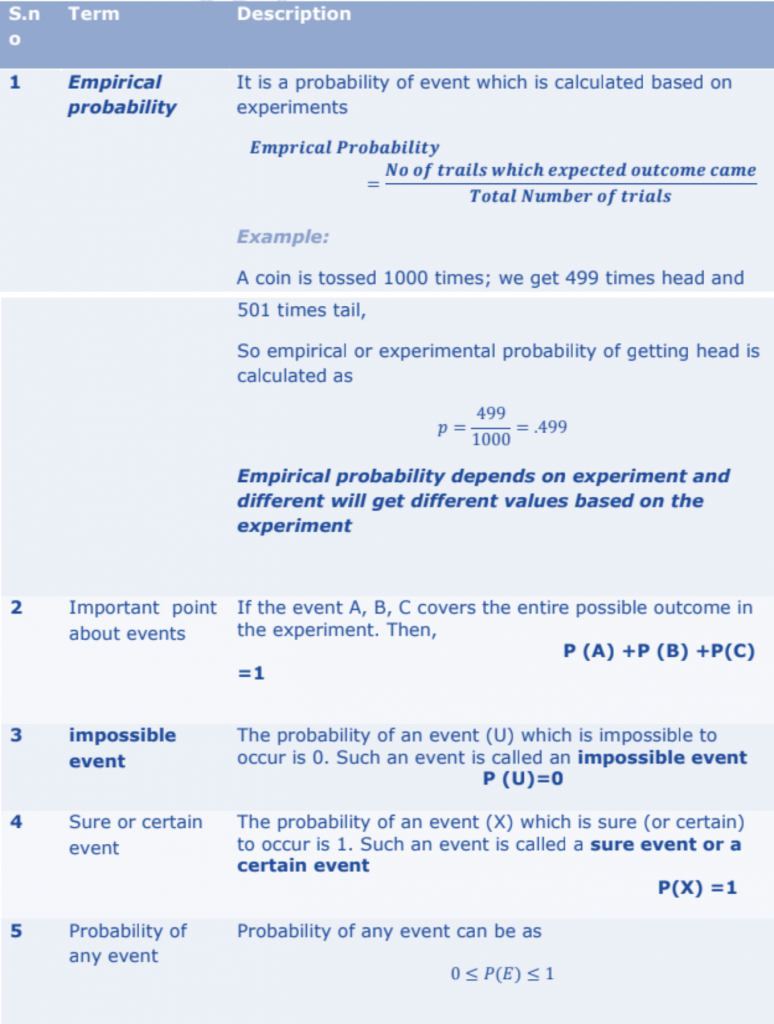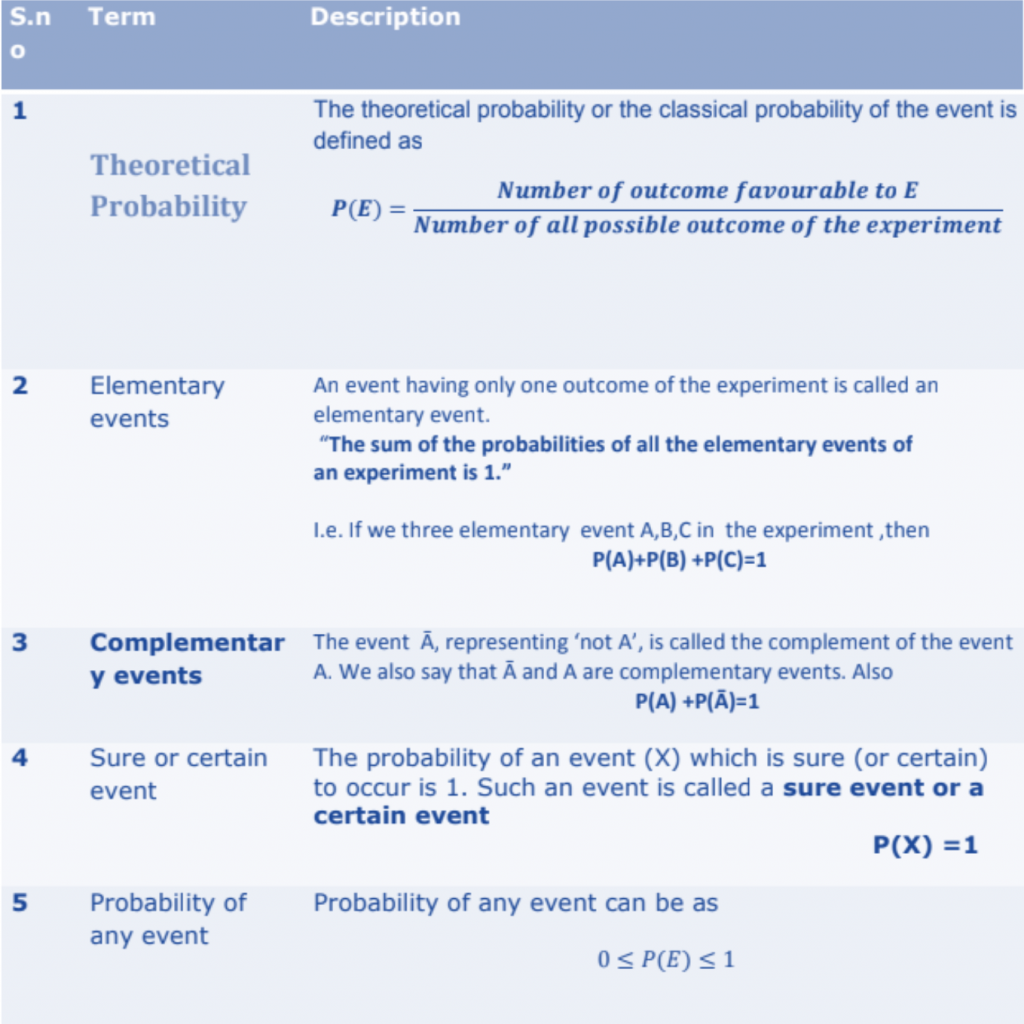CBSE Maths Formula Class 10 Probability Chapter 15
Maths Formula Class-10 Probability
The theory of probabilities and the theory of errors now constitute
a formidable body of great mathematical interest and of great
practical importance.
The theoretical probability (also called classical probability) of an event E,
written as P(E), is defined as
P(E) = Number of outcomes favourable to E / Number of all possible outcomes of the experiment

Maths Formula Class-10 Probability

Summary
1. The difference between experimental probability and theoretical probability.
2. The theoretical (classical) probability of an event E, written as P(E), is defined as P (E) = Number of outcomes favourable to E / Number of all possible outcomes of the experiment
where we assume that the outcomes of the experiment are equally likely.
3. The probability of a sure event (or certain event) is 1.
4. The probability of an impossible event is 0.
5. The probability of an event E is a number P(E) such that
0 ≤ P (E) ≤ 1
6. An event having only one outcome is called an elementary event. The sum of the probabilities of all the elementary events of an experiment is 1.
7. For any event E,


are called complementary events.